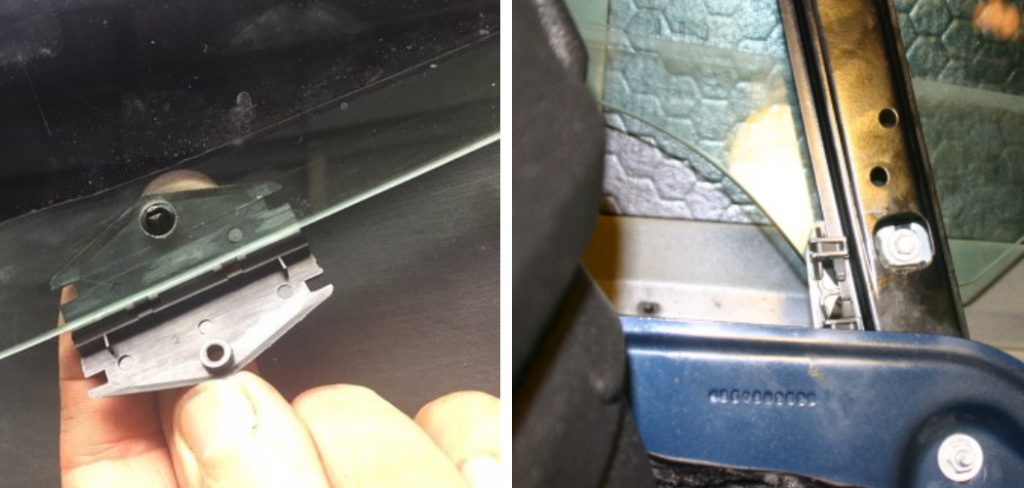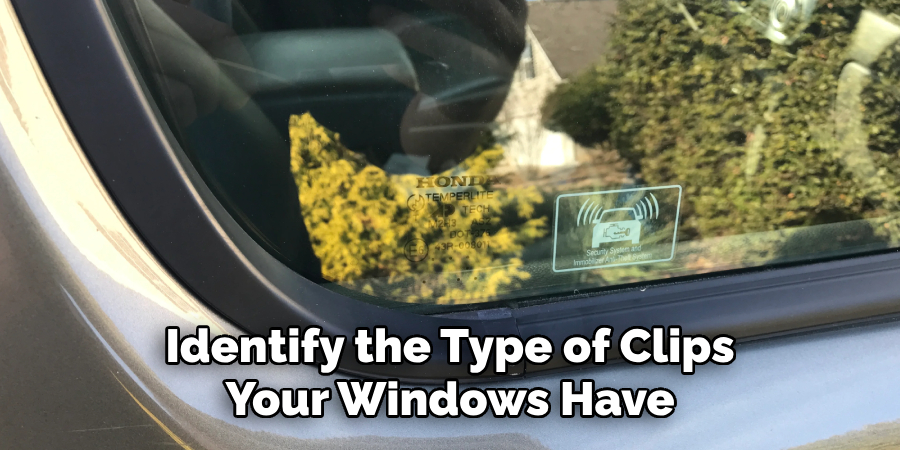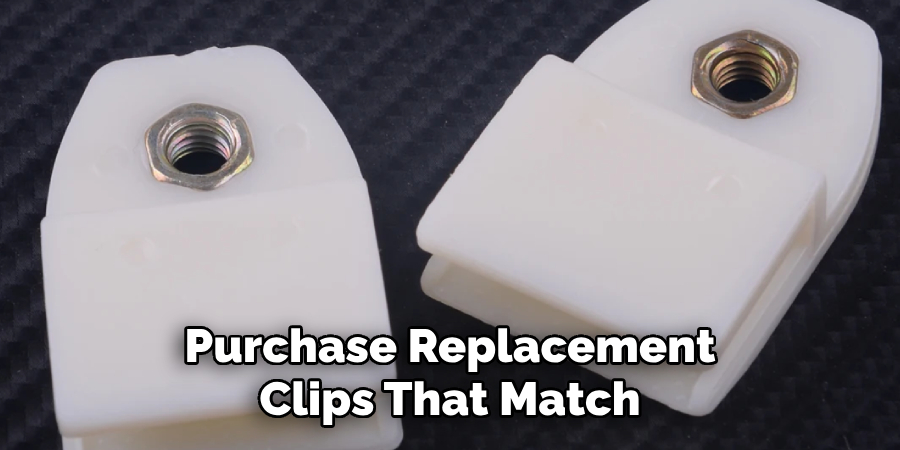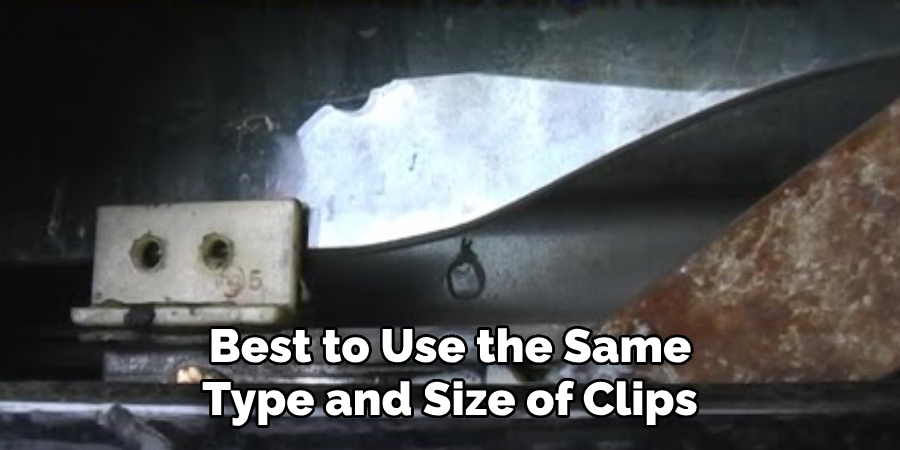Are you tired of dealing with rattling or stuck windows in your home? Window guide clips may be the culprit. These small but vital pieces play a significant role in keeping your windows functional and secure.

However, over time, they can become worn out or damaged, causing issues such as difficulty opening and closing the window or gaps that let in drafts. The good news is that replacing window guide clips is a relatively simple DIY project that can save you from costly repairs or replacements down the line.
In this blog post on how to replace window guide clips, we will explore everything you need to know about these important components and provide step-by-step instructions on how to replace them effectively. So grab your tools and get ready to improve the functionality of your windows!
Why Do Window Guide Clips Need to Be Replaced?
Window guide clips are small plastic or metal pieces that hold the window in place and prevent it from rattling. They also help with the smooth operation of the window by keeping it aligned with the tracks.
Over time, these clips can become brittle or break due to exposure to sunlight, extreme temperatures, moisture, and other environmental factors. They can also become loose or misaligned, causing the window to stick or not close properly. If left unaddressed, this can lead to further damage and compromise the security of your home.
What Tools Do You Need?
Before you start replacing your window guide clips, make sure you have the following tools on hand:
- Flathead Screwdriver
- Phillips-head Screwdriver
- Pliers
- Replacement Window Guide Clips
- Optional: Drill and Drill Bits (if the Clips Are Secured With Screws)
11 Step-by-step Guidelines on How to Replace Window Guide Clips
Step 1: Identify the Type of Window Guide Clips

The first step in replacing window guide clips is to identify the type of clips your windows have. There are two main types: top-mounted and side-mounted. Top-mounted clips are located at the top of the window, while side-mounted ones are attached to the sides. It is essential to identify the type of clips as the replacement process may differ.
Step 2: Remove the Old Clips
Using a flathead screwdriver, gently pry out the old clips from the window frame. If they are held in place with screws, use a Phillips-head screwdriver to remove them. Be careful not to damage the window frame or tracks. But if the clips are damaged or too brittle, you can use pliers to pull them out. You may also need to remove any remaining pieces of the old clips.
Step 3: Clean the Area
Once the old clips are removed, take a moment to clean the area with a damp cloth. This will help ensure that the new clips adhere properly and keep your windows functioning smoothly. The area must be dry before proceeding to the next step. The cleaner the area, the more secure the new clips will be.
Step 4: Take Measurements
Measure the length and width of the window guide clip, as well as its thickness. This will help you find the right size replacement clips for your windows. You can also bring the old clips with you to a hardware store for easy matching. It is crucial to ensure that the replacement clips are of the same size and shape as the old ones for a perfect fit.
Step 5: Get Replacement Clips

Using the measurements, purchase replacement clips that match the size and type of your old ones. You can find them at most hardware stores or online retailers. The packaging should indicate which type of window the clips are suitable for. But if you are unsure, take the old clips with you as a reference. The cost of window guide clips may vary depending on the type and brand.
Step 6: Position the New Clips
Place the new clips on the window frame, lining the holes up with the existing ones. Ensure that they are facing in the right direction, as top-mounted and side-mounted clips have different orientations. The clips should fit snugly into place. You can also use a drill to create new holes if necessary.
Step 7: Secure the Clips
If your window guide clips come with screws, use a drill to secure them in place. Otherwise, press down firmly on each clip until it clicks into place. You can also use a rubber mallet to gently tap them in if necessary.
Make sure the clips are flush against the window frame to prevent any gaps. Otherwise, the window may not close properly. You can also use pliers to bend the clips slightly for a better fit.
Step 8: Test the Window
Once all clips are securely in place, test the window by opening and closing it multiple times. The window should operate smoothly without any sticking or rattling noise. If there are any issues, double-check the placement and alignment of the clips and make adjustments as necessary. But if everything looks and sounds good, move on to the next step.
Step 9: Repeat for Other Windows
If you have multiple windows with damaged or worn-out guide clips, repeat the process on each window. It is best to replace all clips at once to ensure consistency in functionality. The same steps can also be applied to doors with guide clips. You may need to adjust the measurements and type of clips based on the size and shape of your doors.
Step 10: Optional – Apply Lubricant
If you notice your window is still sticking or not sliding smoothly after replacing the clips, you may need to lubricate the tracks and rollers. Silicone-based spray lubricants are best for windows as they do not attract dirt and dust. Apply a small amount to the tracks and rollers, then open and close the window multiple times to distribute it evenly.

Step 11: Enjoy Smooth-Operating Windows
Congratulations! You have successfully replaced your window guide clips and improved the functionality of your windows. Regularly inspecting and maintaining these small but essential components can extend the lifespan of your windows, saving you from costly repairs or replacements.
With your new knowledge of how to replace window guide clips, you can now confidently replace window guide clips on your own whenever necessary. So go ahead and enjoy those smooth-operating windows! Happy DIY-ing!
Do You Need to Use Professionals?
Replacing window guide clips is a relatively simple and straightforward process that can be done by most homeowners. However, if you are uncomfortable or unsure about the steps, it is always best to seek professional help. Additionally, if your windows have unique or complex mechanisms, it may be best to leave the replacement to experts who have experience with different types of windows.
They can also provide guidance on the best type of window guide clips to use for your specific windows. In any case, it is essential to address any issues with window guide clips promptly to avoid further damage and ensure the functionality of your windows. Happy DIY-ing!
Frequently Asked Questions
Q: How Often Should Window Guide Clips Be Replaced?
A: It depends on the type and quality of the clips, as well as environmental factors. In general, it is recommended to inspect and replace them every 5-10 years to ensure proper functionality.
Q: Can I Use Any Type of Window Guide Clips?
A: It is best to use the same type and size of clips that were originally installed on your windows. This will ensure a perfect fit and prevent any issues with the window’s operation.

Q: Can I Replace Window Guide Clips Myself?
A: Yes, replacing window guide clips is a relatively simple DIY task that can be done with basic tools. Just make sure you have the correct type and size of replacement clips and follow the steps outlined above. If you are unsure or uncomfortable doing it yourself, it is always best to consult a professional.
Conclusion
In conclusion, replacing window guide clips may seem like a daunting task, but with the right tools and knowledge, it can be done easily and efficiently. Remember to carefully assess the issue at hand and choose the correct replacement clips to ensure a successful repair. Don’t be afraid to seek help from a professional if needed, as safety should always be a top priority when working on any household project.
Keep in mind that regular maintenance and proper care can greatly extend the lifespan of your window guide clips, saving you time and money in the long run. So don’t wait until they completely break to take action; keep an eye out for any signs of wear and tear and address them promptly.
By following these simple steps on how to replace window guide clips, you can have your windows functioning smoothly once again, providing natural light and fresh air into your home. Make sure to also check out our other helpful posts on DIY home repairs for more handy tips. Until next time, happy repairing!

About
JeepFixes Team is a skilled author for Jeep Fixes, bringing 6 years of expertise in crafting a wide range of jeep fixes. With a strong background in jeep fixes work, JeepFixes Team’s knowledge spans various types of fixtures, from decorative pieces to functional hardware, blending precision with creativity. His passion for jeep fixes and design has made him a trusted resource in the industry.
Professional Focus:
Expert in Jeep Fixes : JeepFixes Team aesthetic specializes in creating durable and innovative jeep fixes, offering both appeal and functionality. His work reflects a deep understanding of jeep fixes techniques and materials.
Sustainability Advocate : He is dedicated to using sustainable practices, ensuring that every fixture is crafted with eco-friendly methods while maintaining high-quality standards.
In his writing for jeep fixes, JeepFixes Team provides valuable insights into the latest trends, techniques, and practical advice for those passionate about jeep fixes, whether they are professionals or DIY enthusiasts. His focus on combining artistry with engineering helps others discover the true potential of jeep in design.
